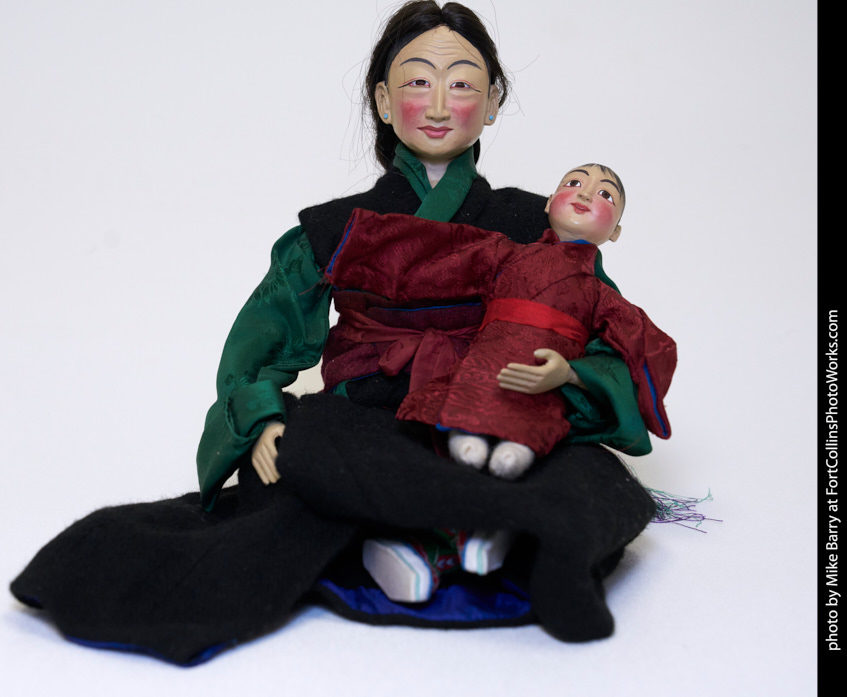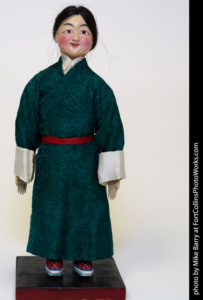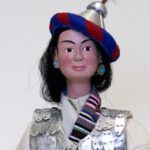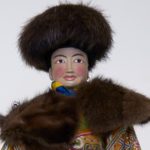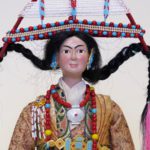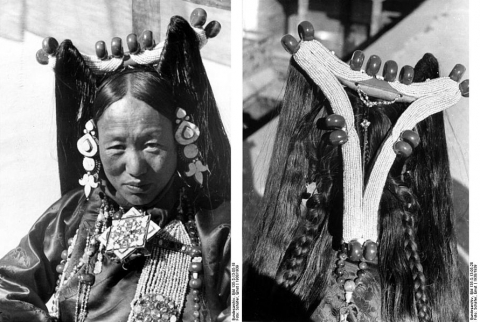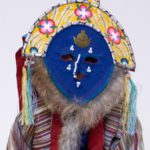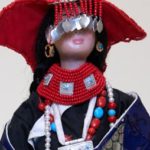Aristocratic Woman with Family
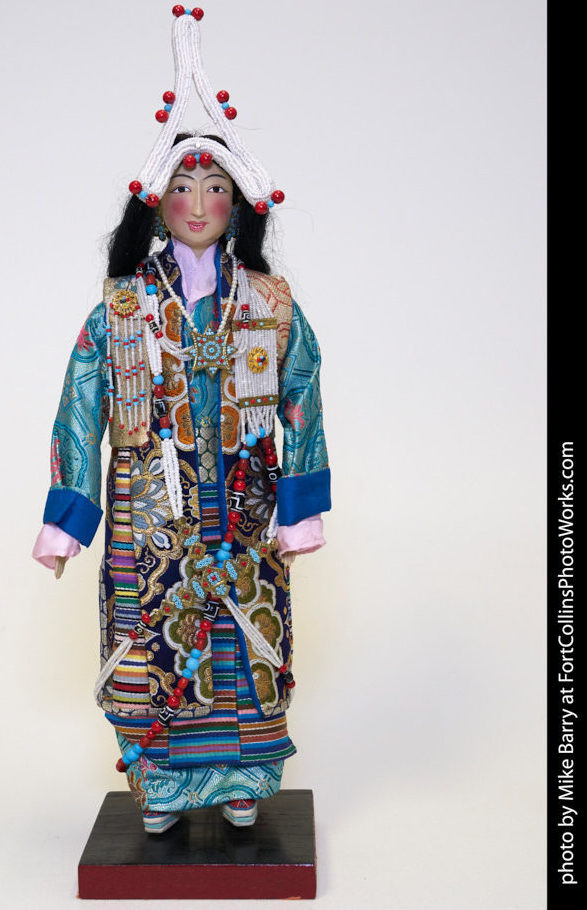
In Tibet’s capital city of Lhasa, an aristocratic woman, married to a lay government official, wore an elaborate silk-embroidered robe (chuba) and multi-colored striped apron (banglian) to attend official functions and ceremonies. A distinctive Y-shaped headdress, or pat’h, indicated her noble ancestry, central Tibetan origin, and husband’s rank in government. The pat’h, constructed of a cloth-covered wooden frame strung with rows of evenly sized pearls, supported her braids and long tresses of artificial hair. A wide variety of opulent pearl jewelry, embellished with gold ornaments and gemstones, emphasized the woman’s aristocratic status.
A nanny, typically a local peasant woman from Lhasa, cared for the children of aristocratic families, as well as the family pets, which could include one or more dogs of the Lhasa Apso breed. Named after the city of Lhasa, this small breed originated in the Himalayas hundreds of years ago. They often served as monastery watchdogs.
